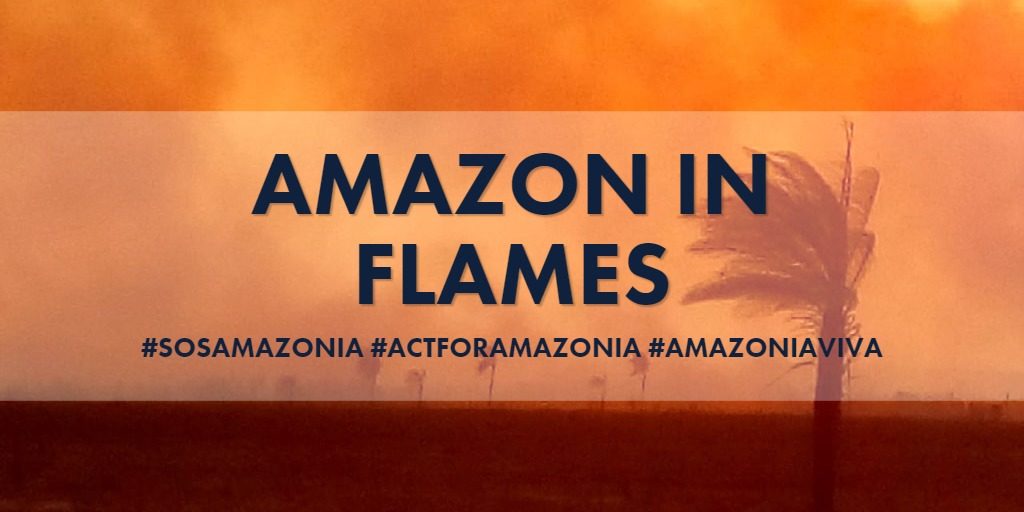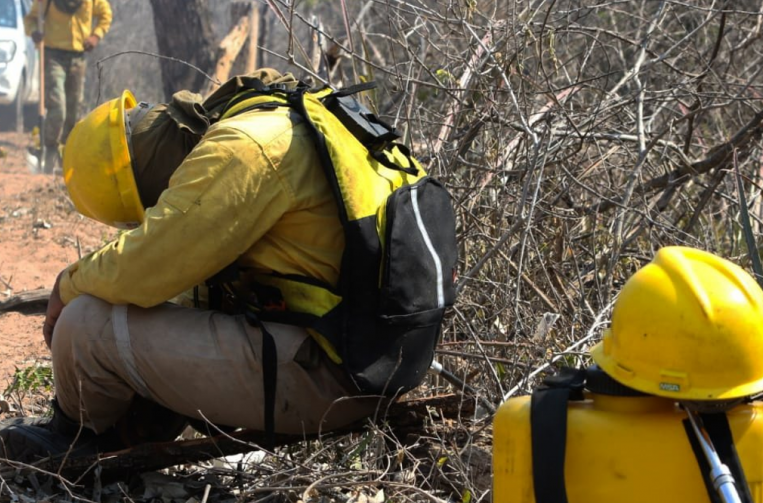Esperanza Project collaborator Kayla Mi-kyung Vandervort has been working with indigenous leaders in Bolivia to create a campaign to support their work. These tribal peoples on the front lines of the devastation have not been getting the support they need and are in desperate need of supplies and help for the communities that are being displaced, as well as the wildlife.
Brazil’s president Jair Bolsonaro isn’t the only culprit behind the fires currently raging across the Amazon at a rate of a football field per minute. With the high demand for meat, soy, and petroleum in developed countries, we are directly fuelling these fires in the Amazon basin. There is much that we can do to help turn this crisis around.
Obviously, the fires haven’t stopped at the border; they’ve been raging all over the Amazon Basin. These fires, most of them provoked by farmers, have spread across Brazil’s borders into Bolivia, Peru and Paraguay, where the fires are still defying efforts to control them. In Bolivia, more than 1.8 million hectares (4.5 million acres) of the Amazon have burned, the majority in national parks and protected areas, wiping out huge portions of the country’s biodiversity and water sources.
 Multimedia presentation by Kayla Vandervort for COICA, the Coordinadora de las Organizaciones Indígenas de la Cuenca Amazónica
Multimedia presentation by Kayla Vandervort for COICA, the Coordinadora de las Organizaciones Indígenas de la Cuenca Amazónica
Officials say the fires are largely the result of intentional burning to convert forest to farmland, according to Mongabay. Sources told Mongabay that this practice has recently intensified after Bolivian president Evo Morales signed a decree in July expanding land demarcated for livestock production and the agribusiness sector to include Permanent Forest Production Lands in the regions of Beni and Santa Cruz.
People on the ground who are fighting the fires say they are not getting the support they need. “It’s a lie that the fire has been put out,” said one leader of CIDOB, the Confederación de Pueblos Indígenas de Bolivia, in a video pleading for help. “Right here, a big one is coming,” he said, training his camera on a plume of smoke on the horizon. “And here is another one – and apart from those, another one over there is about to start. And I’m afraid it’s going to cross over, unfortunately. We’re going to try and put them out, but we need the necessary personnel and equipment.”
Kayla’s story and presentation highlight her work with Bolivian and Brazilian indigenous leaders. For a more global perspective, see related story, Saving the Amazon: 10 Things You Can Do, by Mark Heley, originally published in Voices of Amerikua, an Esperanza Project partner publication.
The charred remains of animals have been found in areas where the fire has passed, and park personnel are working desperately to get them to safety.
One crew is putting food and water out in the Chiquitano dry forest for animals that are fleeing the fire – and finding nothing to eat. “They have to eat, they have to drink – because really, there is no water, there’s no food, there’s nothing – so we’re just doing as much as we can.”
The forest is home to hundreds of animal and plant species, many of which are found nowhere else. In Tucavaca Valley Municipal Reserve alone, reported Mongabay, biologists have recorded 554 different animal species, of which 35 are endemic; 55 endemic plants have also been found there.
CALL TO ACTION:
- Donate directly to Brazil and Bolivia’s indigneous confederations COIAB and CODIB, where your support will go directly towards communities and parks that are affected. These donations will help bring materials to stop the fires, along with give humanitarian aid to the indigenous communities that are burning and were burnt.
- Once the fires have subsided, the Amazon will need to start being reforested. Volunteers and donors will be a huge support in collecting seeds in the Amazon to be redistributed in deforested territories.
- VOTE: For the 2020 presidential and congressional elections, vote for candidates who support climate change initiatives and green energy. Policy changes in the developed world will create a huge impact on the Amazon Basin. Deforestation is driven by the demand for petroleum, mining, and farming (mostly of cattle and soy). By leveraging the demand for petroleum, palm oil, beef, and other rainforest-destroying products and encouraging a shift to sustainable, eco-friendly substitutions, collectively we can make a difference.
- VOLUNTEER. The Amazon needs innovative minds and skilled hands to create alternative sustainable solutions to lift the indigenous economy and to help mitigate political interests in exploiting the region. Specialists are needed to:
- Help set up and promote eco-friendly alternatives to maintain a healthy lifestyle.
- Give specialized workshops to communities to teach journalism, biology, eco-construction, permaculture, human rights, and land rights.
 Feature photo: Firefighters and volunteers have been working around the clock to tackle the flames. Ipa Ibañez/The Conversation.
Feature photo: Firefighters and volunteers have been working around the clock to tackle the flames. Ipa Ibañez/The Conversation.





